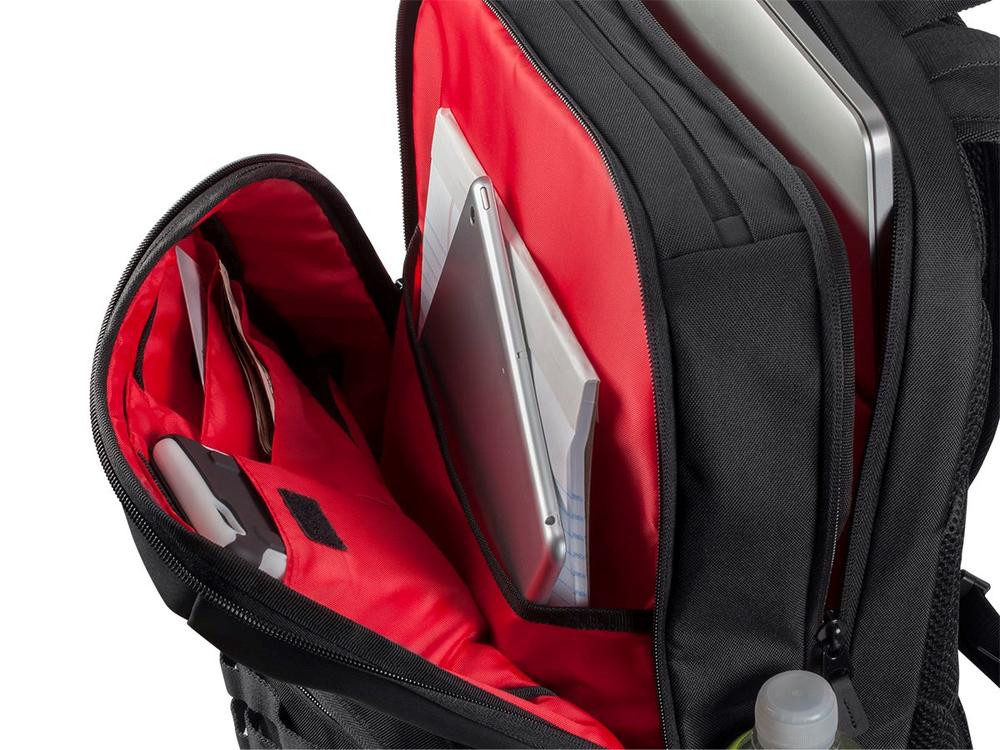This week Super Mario 3D All-Stars, the long-rumored re-release of some of Mario’s most formative polygonal platforming adventures, ground-pounds its way onto your Nintendo Switch as part of the historic 35th-anniversary celebration of the Super Mario franchise. Boasting a trio of high-definition ports—specifically Super Mario 64, Super Mario Sunshine, and Super Mario Galaxy—this collection follows in the footsteps of 1993’s original Super Mario All-Stars, which famously gussied up the brothers’ 8-bit exploits for the 16-bit era.
Arriving amid no small amount of fanfare or controversy (the latter mostly related to its seemingly slim window of availability), Super Mario 3D All-Stars is already shaping up to be one of the Switch’s best-selling titles of the year. But how does this three-part walk down memory lane hold up? Read on for my impressions.
(Almost) No-Frills
While I can’t comment on the quality of Super Mario 3D All-Stars‘ physical packaging—the review copy provided was the digital eShop release—the overall menu setup is Spartan, to say the least. After a quick splash intro, you’re taken to a selection screen with a split six-item timeline.
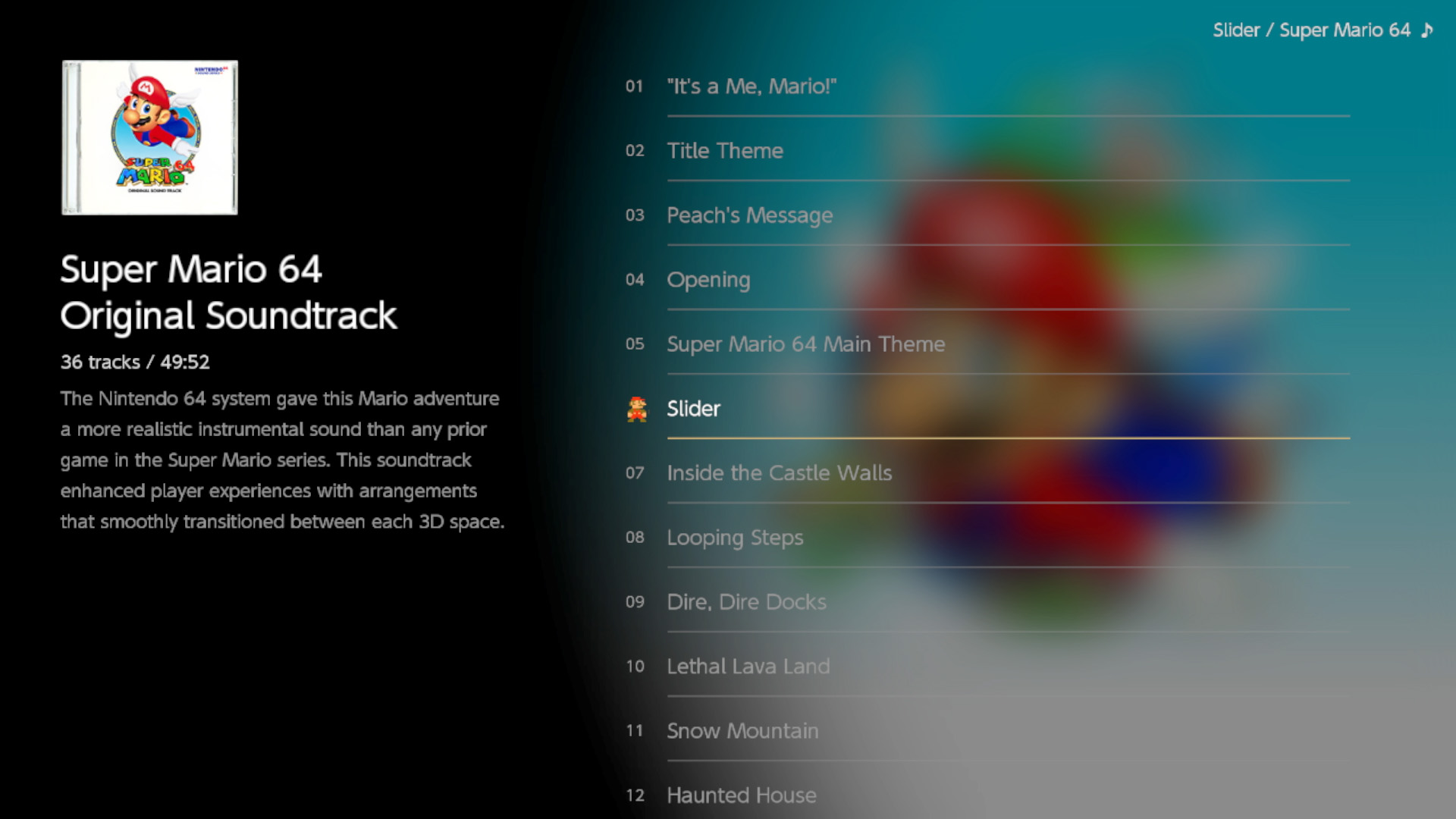
On the left, the original cover art for each game entry is presented in chronological order alongside a brief description. This is complemented by their respective soundtrack CD images to the right, which can be used to peruse the games’ iconic tracks at your leisure.
As a big fan of video game music, I positively adore the easy soundtrack access. Aside from that, the overall menu presentation is adequate but nothing to write home about.
Kicking It Old-School — Super Mario 64
Without question, Super Mario 64 is the very cornerstone of the Super Mario 3D All-Stars lineup. The original 1996 release redefined the Mario franchise with both its 3D visuals and its open-world level design, and this compilation’s other entries are easily viewed as spiritual—if not direct—successors to Mario 64‘s legacy.

Obviously, this is also the title most in need of a facelift, as its jagged character models and mottled background textures leave much to be desired to the modern palate. Overall, its transition to the Switch is a big success. The soundtrack still sparkles, Mario’s first free-roaming adventure somehow remains both inviting and treacherous, and, while still presented in its original 4:3 aspect ratio, the increased visual fidelity is instantly noticeable.
Unlike the slightly retooled graphics of 2004’s Super Mario 64 DS, this version of Super Mario 64 takes great pains to smooth out jaggies and polish up the graininess of this nearly 25-year-old title. Now, I’ll stop short of saying it looks great—and, in fact, it might not even reach the level of more contemporary games featuring “’90s throwback graphics”—but it’s a notable improvement and one that should especially please returning old-timers such as myself.

Unfortunately, this port fails to fully refine the game’s flaky camera system, which serves as a detriment to its precision platforming. The same goes for some of the title’s more antiquated level design quirks, which my 12-year-old summed up succinctly as “OH MY GOD! WHY AM I SLIDING AGAIN?!”
A Deep Dive — Super Mario Sunshine
At the risk of revealing my own deeply internalized middle-child syndrome, I’ll say upfront that Super Mario Sunshine was the game I most looked forward to revisiting in Super Mario 3D All-Stars. While far from a “forgotten classic”—it sold 6.28 million copies, more than double that of The Legend of Zelda: The Wind Waker—this GameCube-exclusive occupies a weird middle ground, lacking much of the nostalgia of Super Mario 64 while also showing its age when compared to the Wii-era’s Super Mario Galaxy.
For those who may have missed this chapter, fear not, as its primary conceit should feel eerily familiar. In short, a vacation to Isle Delfino takes a strange turn for Mario, Princess Peach, and the Toads, when it’s revealed that the once-pristine island is now covered in graffiti and slimy pollution. At the heart of this destruction is a shadowy Mario doppelgänger, and it falls to Mario-proper to literally clean up the mess with his F.L.U.D.D. water cannon.
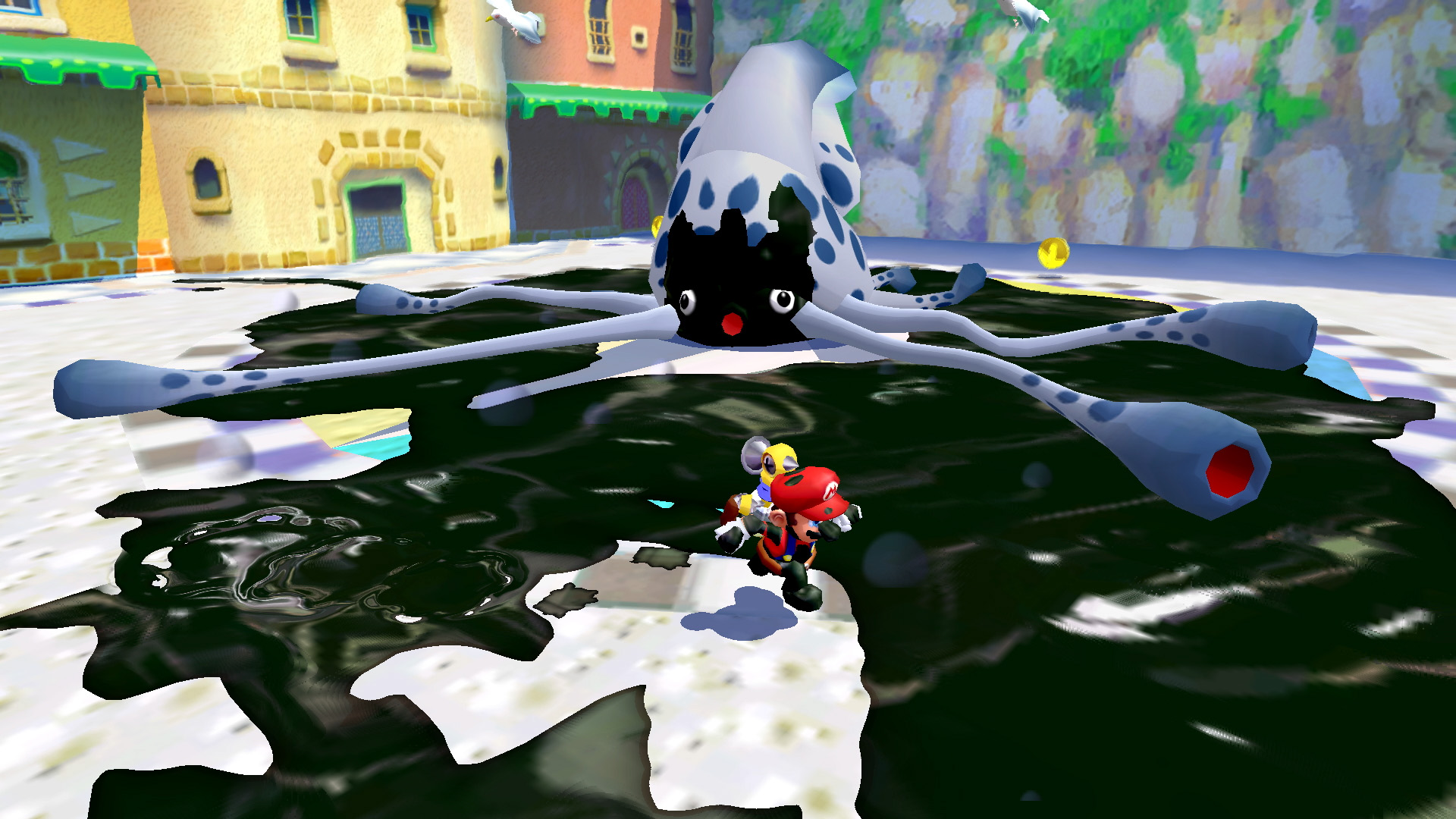
This weird blend of environmentalism and urban renewal is punctuated by the collecting of the obligatory stars, in this case, Defino’s life-giving Shine Sprites, as Mario runs, jumps, and sprays his way to victory.
I was a faithful soldier in the army of team GameCube during the console wars of the early aughts, so there was definitely a little apprehension about going back to Delfino intermingled with my anxious nostalgia. But I was pleased to find that the development team somehow managed to make Super Mario Sunshine on the Switch look how I like to think it looked in its original form. (If that makes sense.)

The interplay of light and darkness as you struggle to uncover the Shine Sprites is handled well, and its new 16:9 presentation makes the game world seem that much more immersive. Again, the only real issues are with the camera during Sunshine‘s occasional forced-perspective scenes and its rudimentary controls.
Movement in tight quarters can best be described as “mushy”—thanks to my older child for that little nugget of wisdom—which can definitely make tumbling off a ledge or obstacle to your death feel a little cheap. This is even more apparent when you’re trying to direct the F.L.U.D.D. with anything even approaching precision. Mapped to the ZR for general use and the R-trigger for stationary spraying (using the left control stick to direct the flow), its easy to understand but difficult to master, which might put off some players.
Take Flight — Super Mario Galaxy
Lastly, we arrive at Mario’s interstellar adventure known as Super Mario Galaxy. While the Wii was, by no stretch of the imagination, a visual powerhouse, even the original graphics in Galaxy were a thing of beauty, and though earth and grass textures on some of the game’s planetoids do show their age, the vast starscapes and sparkling water effects—coupled with the crisp, dynamic character models—could almost make this one seem like a current-generation Nintendo title.
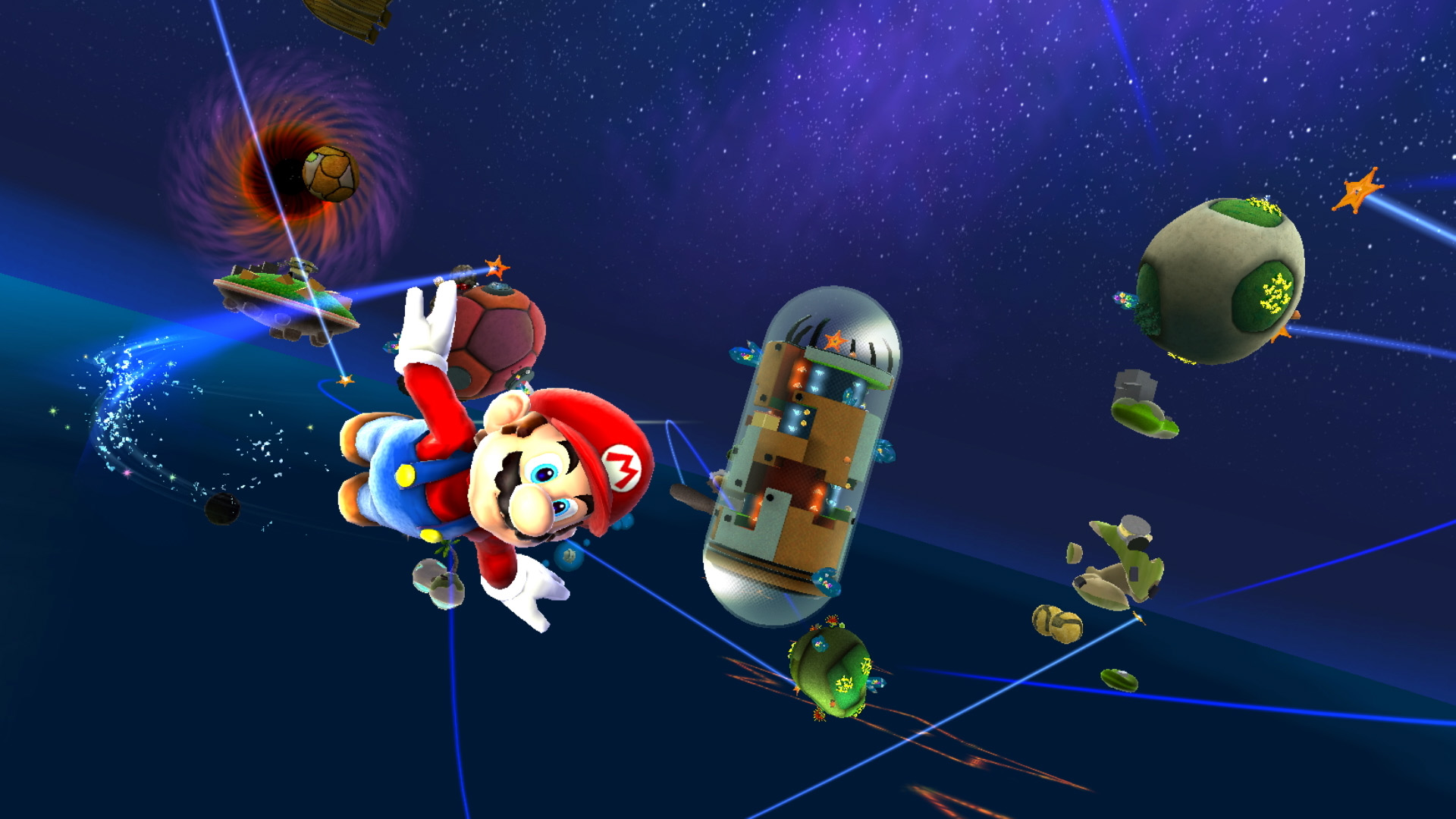
Super Mario Galaxy‘s chief mechanic of planet-hopping and varying gravity effects also still plays beautifully, and it really helps the unique charm of this platformer shine through. Sure, you can draw a straight line from 2007 Mario rescuing Power Stars and discovering new galaxies to 1996 Mario gathering stars and unlocking magical doors around a castle hub, but just as a combination water gun/jetpack made Super Mario Sunshine feel like its own thing, leaping from planet to planet while squashing enemies and avoiding black holes still helps Galaxy feel fresh and exciting.
In fact, the only real issue I had with the original was its reliance on the Wii Remote and Nunchuk. While this control scheme provided for great freedom and noticeable granularity in character movement, it did keep the game shackled to the television. Thankfully, these motion elements have been nicely streamlined for Handheld mode on the Nintendo Switch. (With the notable exception of events like the ray surfing minigame; that forced me to use gyro controls, and I plan to die mad about it.)
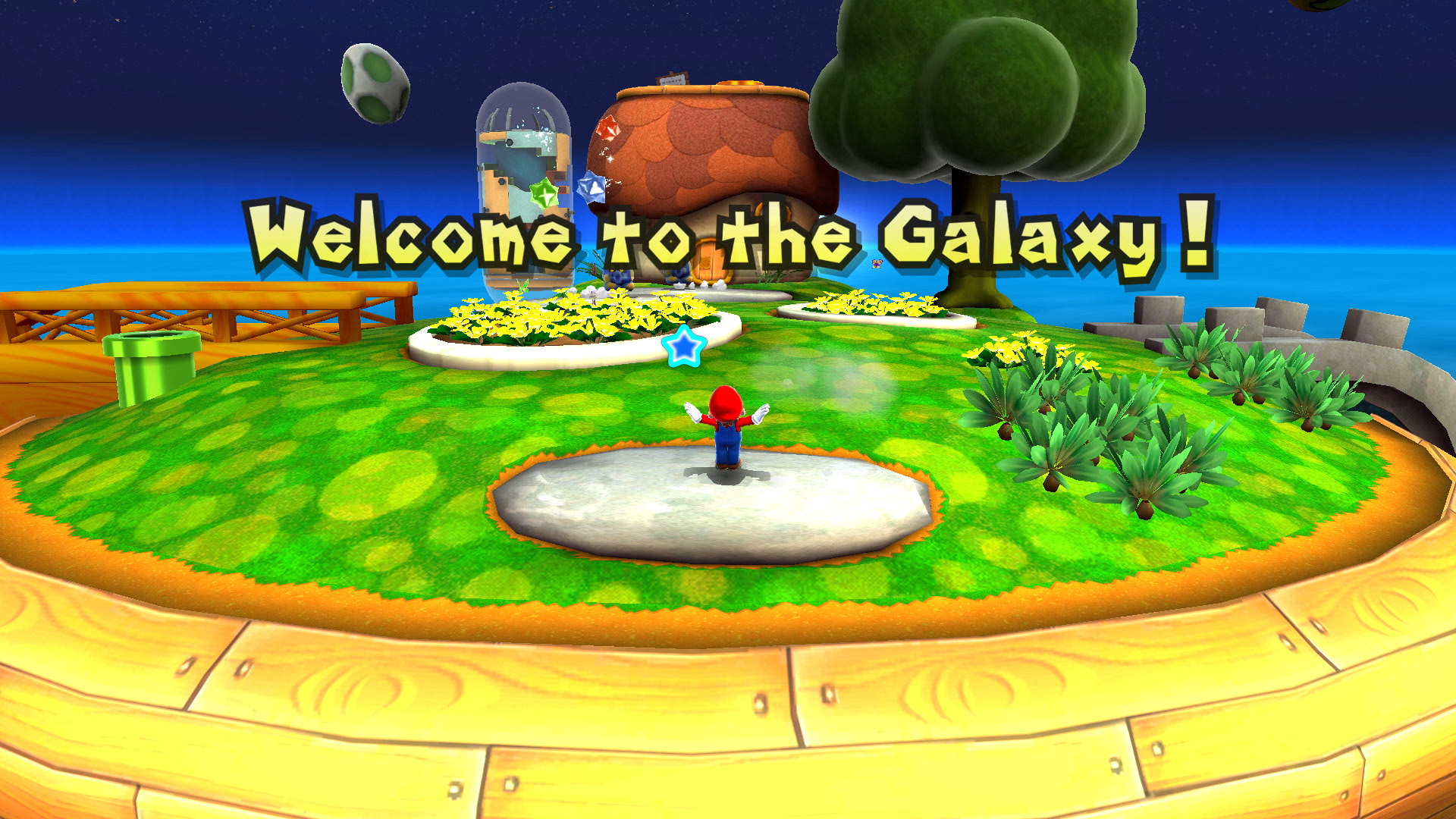
The Star Pointer can now be manipulated using the touchscreen, while the all-important spin move is mapped to X/Y. It’s not exactly perfect—navigating Pull Stars on my little Switch Lite screen with my meaty hand covering up the bulk of the interface occasionally got troublesome—but it works well enough for those of us who like to game on the go.
For those who prefer the big screen, the Joy-Con can still be used like the Wii-mote of old, and there’s even support for Galaxy’s two-player Co-Star mode.
Let’s-a Go!
I guess all this is simply to say that Super Mario 3D All-Stars isn’t Super Mario Odyssey. It isn’t a brand new modern adventure in stunning hi-def. It is, instead, a trip back in time. The most recent of its included games is 13 years old, and that figure is very important in the mental math one must do before experiencing it.
Sure, Super Mario 64, Super Mario Sunshine, and Super Mario Galaxy have been given a bit surface-level facelift, they’ve been tweaked here and there to make them more palatable to modern audiences, and their controls have even been optimized for the Nintendo Switch… but these are not Nintendo Switch games.
These are ports. Not full re-masters, not deluxe editions. And if you can remember that, I have no doubt that you will enjoy everything this title has to offer.
Super Mario 3D All-Stars is a history lesson. It perfectly demonstrates the evolution of Mario in his fun and formative early 3D years, and each chapter, each waypoint, proceeds as a warts-and-all display of what hit the mark and what, perhaps, fell a little short.
Sure, Super Mario 3D All-Stars likely won’t be the best game you play in 2020. Neither will it be the most innovative or the most polished, but what it will be is an enjoyable, invaluable look at three of the most important titles in a beloved franchise’s history.
Review materials provided by Nintendo of America. This post contains affiliate links. Happy 35th anniversary, Mario!


